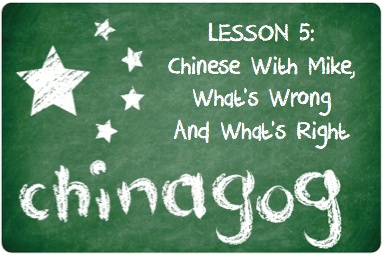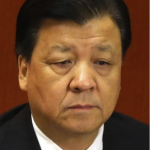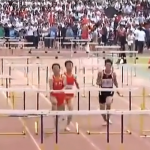
So I just stumbled across Chinese with Mike. I can’t decide if this gentleman is the worst Chinese teacher since my boss forced my coworkers and I to learn “Tianmimi,” or the best Chinese teacher ever, like a mullet-enhanced Dashan. He certainly holds my interest as a Chinese language learner, and that’s half the battle. I mean, this man is constantly rocking a Hawaiian shirt and questionable haircut, and his classroom is plastered with pictures of him, yet I’ve still managed to waste countless precious hours this week I should be spending on prep time (harf harf) learning Chinese with the motherfucker.
My Chinese ability is, uh, interesting. It was pieced together (in the most literal sense of the word) in lovely Henan province, where all the men growl like farmers and the women do, too. I adore the place, but it was fucking hard to use the Standard Pirate Mandarin I was picking up through Pimsleur, only to get in response a stream of unintelligible, second-tone exclamations peppered with a healthy dose of 中中中中中s. I (mostly) picked it up eventually, but I was never really able to find a competent Chinese teacher who could formally direct my learning.
My aforementioned boss was a veteran of the Chinese public school system, so her lesson plan usually included a bunch of random, unrelated vocabulary words, followed by a Confucius Say. I can say the hell out of 三人行必有我师, but it’s never been used for anything other than making new Chinese friends smile. After about a year in China, I hired a private Chinese tutor to come to my house and kick my 普通话 into overdrive. Her first lesson, which was supposed to be an hour, consisted entirely of “你好” “你好吗” and “我很好.” Once we established after five minutes that I knew how to say all that perfectly well, I asked her what was next. She said, “Nothing,” before awkwardly packing up her things and leaving. I called her a couple of times to see if we could arrange another class, but never heard back.
After that, the Zhengzhou North Tea Market was my primary source for conversation practice, and while my listening improved, my pronunciation and knowledge of grammar stagnated. It was frustrating, because all I wanted was someone who taught Chinese like I teach English. Competent language instruction is pretty easy if you focus on a few points. Emphasize the communicative importance of language. Logically group vocabulary and grammar. Include activities that are fluency-focused (minimal teacher correction) and accuracy-focused (teacher correction of target vocabulary, grammar). Make the class interesting.
Chinese with Mike does a lot of things that offend a lot of my formally-trained teaching sensibilities. For one, his lessons are a good 70 to 80 percent English, which is excessive even for an early beginner class. He also doesn’t give any wait time for his viewers to reflect on or repeat the language. When presenting a language point (such as his “There is/there are” lesson), he constantly re-translates the grammar back into English, which is quite confusing. Mike, you only need to explain once that “there is/there are” switch into “[noun] have/ [noun] has” in Chinese. And you have the grammar topic written in English at the top of the whiteboard!
Any TEFL course not purchased for $60 on Groupon will hammer home the importance of student-centered lessons. Good TEFL teachers work on reducing the ratio of TTT (teacher talk time) to STT (student talk time) in their classes as much as possible. Student-to-student interaction is gold, and should be the ultimate goal of any TEFL class. If you can get a pair of 10-year-old Chinese students to have an authentic conversation in English, you are doing your job exactly as Jesus intended.
Now that I’ve got that party-line stuff out of the way: Mike does a lot of stuff quite well. First of all, he looks like NFL sackmaster Jared Allen, and now that Allen doesn’t play for the Kansas City Chiefs I am totally in favor of that guy. (Go Broncos.)
Mike’s methodology is solid. It’s obvious that he’s the Dashan of Chicago. He could probably cross-talk my puny Chinese into a gang-controlled sidwalk, but instead he levels his language to ridiculous depths in order to connect with true beginners. His gestures that emphasize tones are great, and he even changes his height and lateral position to hammer home the importance of perfect pronunciation. He includes extremely useful visual examples from time to time, and I’m sure that the “downloads are currently being revised” will return in the near future with a supplemental vengeance.
The best thing about Chinese with Mike is that the guy delivers interesting lessons. He makes dry jokes, throws markers for effect, dresses extra-conspicuously and tries to make his viewers guess how he’s changed his appearance from week to week. Jokes are beginner-level and come out of nowhere.
And in that last video about prepositions, when he excuses himself for 烤肉, he looks at the camera with a quiet confidence, turns around and makes an epic fist pump at the board. Doing that, he kind of looks like our new favorite Bostonian, Donnie. The mannerisms, the accent, the on-camera swagger… the resemblance is…
Nah, can’t be.
Greg is an ESL instructor who spent two productive years teaching in China. He currently lives in Colorado.
Previously: Real-World Language Learning Advice: Have A Drink

















































Greg, would it be possible to convey your points without the f words?
I agree with MKL, It’s interesting to know your viewpoint regarding Mike’s channel. But I don’t think any abusive word was needed here.
I am a total beginner learner of Chinese and 65 years old; I love the way Mike tries to beat into listeners’ heads what he deems important. I see nothing wrong with repeating continuously the same important things.
Hi Greg,
Personally I think that you need to reconsider your comments about Mike’s Chinese lessons.
” It was frustrating, because all I wanted was someone who taught Chinese like I teach English ”
This is quite a specific request, especially coming from a teacher like yourself. Rather than searching for one class that fits your criteria of the “ideal method”, how about combining several methods together?
I lived in France for an entire year, and prior to this I only knew how to say Bonjour, Merci and Au Revoir. I had the wonderful opportunity of living with french families and I would like to share with you my experiences of unlocking the language.
When I first attended French lessons, I understood absolutely nothing because the classes themselves were entirely in French (including the course material). I decided to make extra homework for myself and went to the internet (and books) to find a vocabulary list for grammar. In this way, I was eventually able to follow the classes.
Another dilemma I came across was figuring out what to learn first. Vocabulary or grammar structures? Knowing a bunch of terms isn’t particularly useful if you can’t say anything more about them. But how can you learn grammar if you don’t know the vocabulary being fitted into the context?
My findings? You have to learn both of them at once. Make lists of words which you think are relevant to you, and memorise them. Put them into sentences that you will definitely use and memorise those too – this was a method I learned from my Japanese teacher in high school. As you mentioned before, you were living in China, so this was already a opportunity for you to practise. Most importantly, insist on using Chinese and only switch to English if you are really struggling to communicate. This was especially difficult for me in the beginning, but those around me eventually understood and kept their usage of English to a minimum.
So all in all, the ideal teacher for learning a particular language does not always exist and you just have to deal with it in your own way. I am not a teacher myself, but I guess that I have always just seen teachers as facilitators of learning, meaning that students also need to make their own efforts rather than just being spoonfed. It’s also what the students choose to do with the information that they have been given.
Back to Mike Laoshi. I think that he gives a great introduction into the Chinese language at a free cost with his youtube videos. Especially for those who are not learning the language in a immersive environment, it’s understandable that he runs the lessons in English. I’m sure the corny jokes can be put aside. If you dislike his website resources, there are plenty of other resources available.
Good luck with your teaching and future studies.
Chinese with Mike is the best. I’ve recommended it to lots of my friends serious about learning Chinese and they are hooked. He also has a newly published book and CD. As with anything though you need to put forth the effort and lose the anger toward the subject.
I love chinese with Mike.
His teaching is brilliant and a lot of creativity and energy has gone into making these videos and you can always replay them if required!
Greg, I am disappointed that you are an english teacher too. sometimes, does it really matter how one teaches except that Mike has motivated me to learn on my own. Even though he made a few mistakes but that does not matter. madarin is a very difficult language to get right at first.
Personally, dont judge others before judging yourself. You should read some of the chinese poems that teach us self reflection. Learning chinese is also about learning our way of life for peace and harmony.
I loved this review. F words and all. I havent watched Mike yet but now I will.
Mike rocks. All the other teachers are fucking douchebags and whores.
Chinese with Mike is what first got me interested in Chinese. That’s far and beyond what the vast majority of language teachers are able to do.